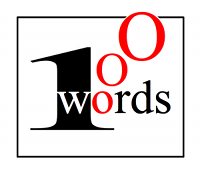 Hi, I’m Tania Halban, an ex-music student from Oxford University. Having studied the history of classical music, musical analysis and music philosophy, I’ve started a blog with some classical music musings. I now work in digital media and am a cycling fanatic, but am staying involved in the music world. I play the piano (mainly Schubert!) and have conducted concerts in the Holywell Music Room in Oxford. Please take a look at my blog for further posts: http://thnotesonnotes.wordpress.com.
Hi, I’m Tania Halban, an ex-music student from Oxford University. Having studied the history of classical music, musical analysis and music philosophy, I’ve started a blog with some classical music musings. I now work in digital media and am a cycling fanatic, but am staying involved in the music world. I play the piano (mainly Schubert!) and have conducted concerts in the Holywell Music Room in Oxford. Please take a look at my blog for further posts: http://thnotesonnotes.wordpress.com.
A big thank you to Artipeeps for making me music correspondent!
_______________________________________________________________________________________________________________
Baroque, Minimalist & Stravinskian Sound Worlds in Max Richter’s Recomposed Vivaldi
 Max Richter – a leading British composer – has just premiered his recomposed version of Vivaldi’s Four Seasons to exceptional critical acclaim. Richter describes how he sculpted his music from the original material, going back to the music itself rather than working with old recordings (as is the case with most recomposed versions), picking out his favourite parts and ‘turning them up to make new objects’.
Max Richter – a leading British composer – has just premiered his recomposed version of Vivaldi’s Four Seasons to exceptional critical acclaim. Richter describes how he sculpted his music from the original material, going back to the music itself rather than working with old recordings (as is the case with most recomposed versions), picking out his favourite parts and ‘turning them up to make new objects’.
Known particularly for a variety of collaborations and his film music for Waltz with Bashir, Richter also co-founded Piano Circus, a contemporary piano ensemble for six pianos that specialises in minimalist and postmodern music, commissioning works from Philip Glass, Steve Reich and Arvo Pärt. This grounding in minimalist techniques is central to Richter’s recomposed Vivaldi. Through an exceptionally diverse range of influences, Richter manages to create a cohesion of different sound worlds, bringing Vivaldi’s Baroque concerto into the electronic, postmodern 21st century, meanwhile touching on a Stravinskian earthly timbre reminiscent of his Sacrificial Dance.
Both Richter’s and Vivaldi’s works are centred upon a process of building up passages from repeating motivic and rhythmic fragments. This construction lies at the heart of both the Baroque and minimalist aesthetic, providing a natural bridge between the two pieces, despite the three centuries between them. Richter’s minimalist techniques are particularly clear in Spring 0 and Spring I with his use of phasing and looping and pedal notes grounding the harmony. This process of layering and slow-building is particularly apt for conjuring the imagery of the birth of Spring.
The dynamic energy of the original Four Seasons is matched and sometimes even exceeded by Richter, and yet he creates a more circular effect than Vivaldi’s teleological drive. Richter plays with the listener’s expectations, dissipating a climax with a sudden hiatus and moment of complete stasis, such as in Summer III where the intense rhythmic patterns are cut off to be replaced by celestial violin harmonics at 3’ 36’’ in the video below. The only remnant of the earlier energy resides in the softly pounding heartbeat underlying the strings.
Beyond the connections to Vivaldi’s original, Richter’s work also exhibits influences from Stravinsky, both in compositional techniques and timbres used. The three elements which Jonathan Cross – a leading Stravinsky expert – believes to be at the centre of Stravinsky’s aesthetic, are also relevant to Richter’s, namely: drobnost – meaning splinteredness or a sum of its parts, whereby everything is constructed in blocks; nepodvizhnost – stasis, with no directed linear motion, constructed by immobile ostinatos that are repeated rather than thematically developed; and hypostatisation – a focus on the moment as an independent event.
Despite the immense difference between Stravinsky’s and Richter’s music, Richter’s recomposed Vivaldi actually combines all three of these compositional devices. The individual movements can be divided into blocks consisting of ostinato repeating motifs, contrasted with moments of complete stasis such as the one in Summer III, and Richter’s prominent use of cyclical repetition creates an intense focus on the moment akin to Stravinsky’s hypostatisation. In doing so, Richter’s work emphasises Stravinsky’s position as father of minimalism and postmodernism, whilst being a leader of modernism.
The earthly timbre at the beginning of Winter I further emphasises the connection between the two composers, creating allusions to the Sacrificial Dance in Stravinsky’s Rite of Spring. Both have a raw timbre from the rough marcato strings, and Richter draws out the dissonances in Vivaldi’s original using more complex harmonies here than in the rest of his work.
Recomposed is teeming with resonances: to Richter’s forebears; to both contemporary classical and pop music; electronic music; dance music; drumming – the list is endless. Andy Gill writing for The Independent, calls Richter’s creation a ‘palimpsest of the original work’. So, how clean has he scraped the original manuscript? As Richter himself said, he has kept the ‘gestures, shapes, textures and dynamics of the Vivaldi’, and despite using only a quarter of the original music, the parts that he does use are employed over and over again. He refragments Vivaldi’s original, extracting individual moments, stripping them bare and relayering them; as Daniel Hope says, putting them through a time machine and bringing it into the 21st century. And in doing so, Richter has taught us something new about the original work, opening up Vivaldi’s compositional process and showing how the same material, and even the same techniques, can be used to create something entirely new, though with an intricate web of connections to the past.
Richter’s work is not simply a footnote to Vivaldi’s, as could so often be the case in a recomposed work, and nor is it even an epilogue. Instead, it bridges the centuries between its originator and contemporary music, mixing genres and techniques, bringing Vivaldi into the 21st century, and Richter back to the 17th; a truly impressive achievement.










































